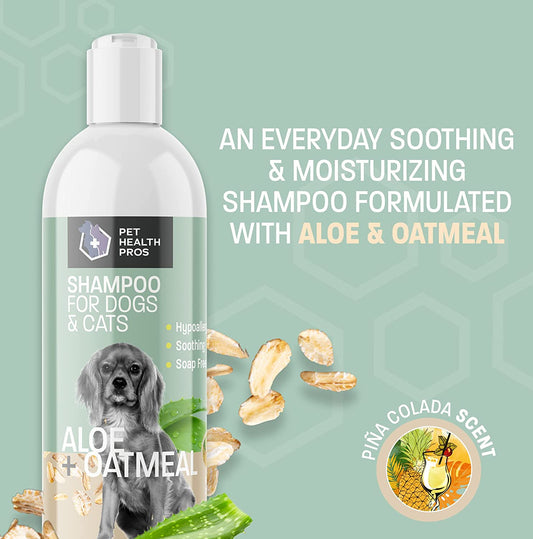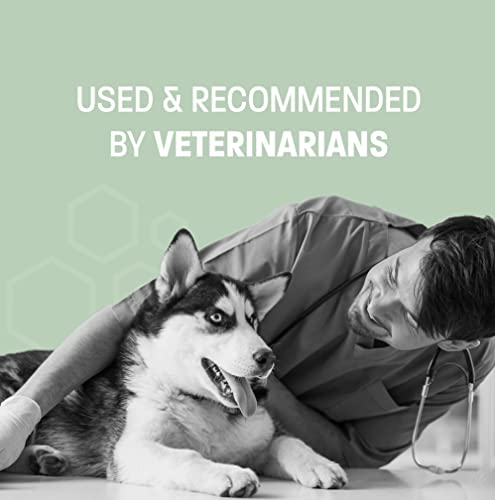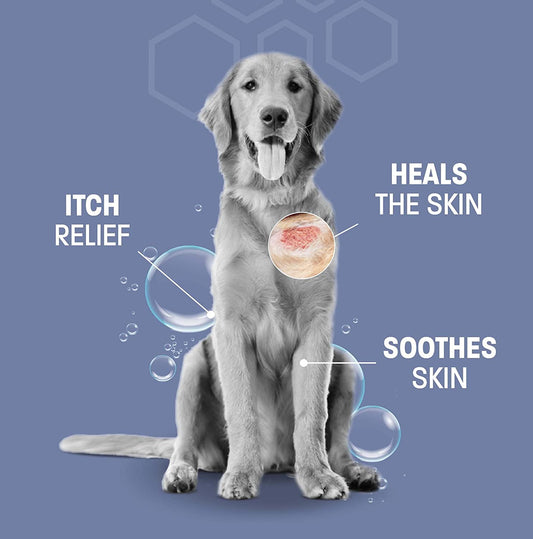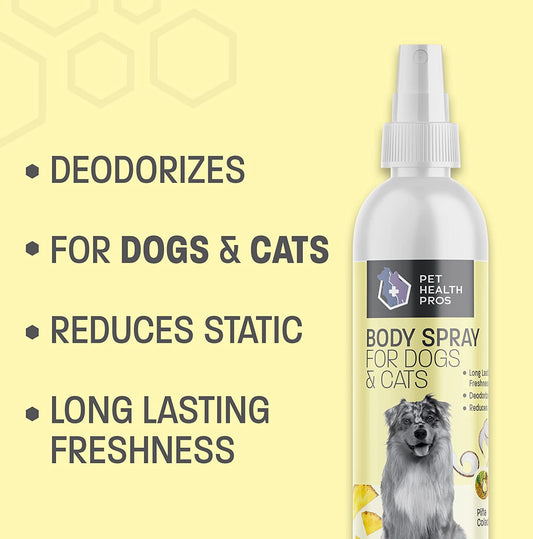Hot spots are a common skin condition in dogs that can cause discomfort and irritation. They are characterized by red, inflamed areas of skin that can be itchy and painful. Fortunately, there are several treatment options available to soothe hot spots and promote healing. In this article, we will explore the causes and symptoms of hot spots, as well as ways to prevent and treat them. We will also discuss natural remedies and provide tips for caring for dogs with hot spots.
Key Takeaways
- Hot spots are red, inflamed areas of skin in dogs that can be itchy and painful.
- Preventing hot spots in dogs involves maintaining proper grooming and hygiene.
- Hot spot spray for dogs can help soothe and heal hot spots.
- Natural remedies like aloe vera, chamomile, and tea tree oil can provide relief for hot spots.
- Keeping the hot spot area clean and preventing dogs from scratching is important for healing.
What are Hot Spots in Dogs?
Understanding the Causes of Hot Spots
Hot spots in dogs, also known as acute moist dermatitis, are localized areas of skin inflammation and irritation. They can be caused by a variety of factors, including allergies, insect bites, skin infections, and irritation from scratching or licking. These hot spots can be quite uncomfortable for dogs and can lead to further complications if not treated promptly.
Identifying the Symptoms of Hot Spots
Hot spots in dogs can be identified by various symptoms. Redness, swelling, and itchiness are common signs of hot spots. These areas may also appear moist or oozing. Dogs with hot spots may exhibit excessive licking or scratching of the affected area. Hair loss and crusty skin can also be observed. It is important to note that hot spots can be painful for dogs, so they may show signs of discomfort or irritability.
Preventing Hot Spots in Dogs
Preventing hot spots in dogs is crucial to ensure the well-being of your furry friend. Hot spots, also known as acute moist dermatitis, can cause discomfort and irritation for dogs. By taking proactive measures, you can minimize the risk of hot spots and keep your dog happy and healthy.
One important step in preventing hot spots is to address any underlying issues that may contribute to their development. Dog itching signs can be an indication of allergies, fleas, or other skin conditions. Regularly check your dog for signs of itching, such as excessive scratching or biting. If you notice any of these signs, consult with your veterinarian to determine the cause and appropriate treatment.
Another key aspect of prevention is maintaining good hygiene for your dog. Keep your dog's coat clean and free from dirt and debris, as these can contribute to the development of hot spots. Regular grooming, including brushing and bathing, can help remove any potential irritants and keep your dog's skin healthy.
Additionally, it's important to ensure that your dog's environment is clean and free from allergens. Vacuum and clean your home regularly to minimize dust, pollen, and other potential triggers. If your dog spends time outdoors, make sure the area is free from plants or substances that may cause skin irritation.
Lastly, provide your dog with a balanced diet and proper nutrition. A healthy immune system can help prevent hot spots and other skin issues. Consult with your veterinarian to determine the best diet for your dog's specific needs.
By following these preventive measures, you can significantly reduce the risk of hot spots in dogs and promote their overall well-being.
Treating Hot Spots in Dogs
Using Hot Spot Spray for Dogs
Hot spot spray for dogs is a beneficial product that can help in the treatment of hot spots. Hot spots, also known as acute moist dermatitis, are irritated and inflamed areas on a dog's skin. They can be caused by various factors such as allergies, insect bites, or excessive licking and scratching. Hot spot spray contains ingredients that can provide relief and promote healing. It is important to choose a hot spot spray that is specifically formulated for dogs, as some products may contain ingredients that are harmful to them. When using hot spot spray, it is recommended to follow the instructions provided by the manufacturer.
Applying Topical Treatments for Hot Spots
When it comes to treating hot spots in dogs, topical treatments can be highly effective. These treatments are applied directly to the affected area and can provide immediate relief from itching and inflammation. There are several types of topical treatments available, including antiseptic sprays, anti-itch solutions, and medicated creams. These products are specifically formulated to soothe the skin, reduce redness, and promote healing.
One popular option for treating hot spots is an antiseptic spray. This type of spray contains ingredients like Chlorhexidine and Ketoconazole, which have antiseptic and antifungal properties. The spray helps to cleanse the affected area and prevent infection, while also providing relief from itching and discomfort.
Another option is an anti-itch solution, which is designed to relieve itching and reduce inflammation. These solutions often contain ingredients like Aloe Vera and Tea Tree Oil, which have soothing and calming properties. They can be applied directly to the hot spot to provide immediate relief.
In addition to sprays and solutions, there are also medicated creams available for treating hot spots. These creams contain ingredients like Hydrocortisone and Benzoyl Peroxide, which help to reduce inflammation and promote healing. They can be applied to the affected area several times a day to provide ongoing relief and support the healing process.
Administering Oral Medications for Hot Spots
Administering oral medications is another option for treating hot spots in dogs. Medications such as antibiotics or steroids may be prescribed by a veterinarian to help reduce inflammation and fight off any bacterial infections. It is important to follow the veterinarian's instructions carefully when giving oral medications to your dog. Proper dosage and timing are crucial to ensure the medication is effective and safe for your pet. Additionally, it is important to maintain good dog hygiene to prevent hot spots from recurring. Regularly bathing your dog, keeping their coat clean and dry, and regularly grooming them can help prevent hot spots.
Natural Remedies for Hot Spots
Soothing Hot Spots with Aloe Vera
Aloe vera is a natural remedy that can help soothe hot spots in dogs. It has anti-inflammatory properties that can reduce redness and swelling. Aloe vera can also provide relief from itching and promote healing of the affected area. To use aloe vera for hot spots, you can apply the gel directly to the affected area. It's important to choose a pure and organic aloe vera gel without any added chemicals or fragrances. Reminder: Always consult with your veterinarian before using any home remedies on your dog.
Calming Hot Spots with Chamomile
Chamomile is a natural remedy that can help calm hot spots in dogs. Chamomile has anti-inflammatory properties that can reduce redness and swelling associated with hot spots. It also has a soothing effect on the skin, which can help alleviate itching and discomfort. Chamomile can be used in different forms, such as chamomile tea or chamomile-infused sprays. Applying chamomile topically to the hot spot area can provide relief and promote healing. It is important to note that while chamomile can be beneficial, it is not a substitute for proper veterinary care. If your dog has a severe or persistent hot spot, it is best to consult with a veterinarian for appropriate treatment.
Relieving Hot Spots with Tea Tree Oil
Tea tree oil is known for its antibacterial and anti-inflammatory properties, making it an effective remedy for hot spots in dogs. When applied topically, tea tree oil can help soothe the irritated skin and reduce redness and swelling. However, it is important to note that tea tree oil should always be diluted before use, as it can be too strong and potentially harmful if used in its pure form. To dilute tea tree oil, mix a few drops with a carrier oil such as coconut oil or olive oil. Apply the diluted mixture to the hot spot using a clean cotton ball or pad. Repeat this process a few times a day until the hot spot starts to heal.
Caring for Dogs with Hot Spots
Keeping the Hot Spot Area Clean
Keeping the hot spot area clean is crucial for the healing process and to prevent further infection. Regular cleaning of the hot spot will help remove any dirt, debris, or bacteria that may be present. It is important to use gentle and non-irritating cleaning solutions specifically designed for dogs. Avoid using harsh chemicals or human products as they can further irritate the skin.
To clean the hot spot area, you can use dog ear cleaning wipes or a mild antiseptic solution recommended by your veterinarian. These wipes are convenient and effective in removing dirt and soothing the affected area. Make sure to follow the instructions on the packaging and gently wipe the hot spot area, being careful not to cause any additional discomfort to your dog.
Additionally, it is important to keep the surrounding fur clean and trimmed. Long fur can trap moisture and bacteria, making it difficult for the hot spot to heal. Regular grooming and trimming can help prevent the hot spot from worsening and promote faster healing.
Preventing Dogs from Scratching Hot Spots
Preventing dogs from scratching hot spots is crucial for their healing process. Maltipoo grooming tips can help in preventing dogs from scratching their hot spots. One effective tip is to keep your dog's nails trimmed short. Long nails can cause more irritation and damage to the hot spot area. Regular grooming sessions can also help in preventing hot spots by keeping your dog's coat clean and free from tangles. Additionally, using a cone collar or an Elizabethan collar can prevent your dog from reaching and scratching the hot spot.
Using Protective Clothing for Dogs with Hot Spots
When caring for dogs with hot spots, using protective clothing can be beneficial in preventing further irritation and promoting healing. Protective clothing such as dog shirts or cones can help prevent dogs from scratching or biting at the hot spot, which can worsen the condition and delay the healing process. These clothing options provide a physical barrier that prevents direct contact between the dog's skin and external irritants. Additionally, they can help to keep the hot spot area clean and free from dirt and bacteria. It is important to ensure that the protective clothing fits properly and is comfortable for the dog to wear.
Hot spots are a common skin condition in dogs that can cause discomfort and irritation. These are areas of inflamed and infected skin that can appear red, swollen, and painful. If your dog is suffering from hot spots, it's important to provide proper care and treatment to alleviate their symptoms. At Pet Health Pros, we understand the importance of your dog's health and well-being. That's why we offer a wide range of affordable and high-quality pet health supplies, including products specifically designed to treat hot spots. Our products are made in the USA and are backed by a 100% satisfaction guarantee, so you can shop with confidence. Visit our website today to explore our selection of pet health supplies and give your dog the care they deserve.
Conclusion
In conclusion, hot spots in dogs can be a bothersome condition that can cause discomfort and irritation. Understanding the causes and identifying the symptoms of hot spots is crucial in preventing their occurrence. Hot spot spray for dogs can be an effective treatment option, along with topical treatments and oral medications. Additionally, natural remedies such as aloe vera, chamomile, and tea tree oil can provide soothing relief. It is important to keep the hot spot area clean, prevent dogs from scratching, and consider using protective clothing for dogs with hot spots. By following these measures, dog owners can help alleviate hot spots and ensure the well-being of their furry friends.
Frequently Asked Questions
What are hot spots in dogs?
Hot spots, also known as acute moist dermatitis, are localized areas of skin inflammation and irritation in dogs. They are often accompanied by redness, swelling, and oozing.
What causes hot spots in dogs?
Hot spots can be caused by a variety of factors, including allergies, insect bites, poor grooming, underlying skin infections, or excessive moisture on the skin.
How can I identify hot spots in my dog?
Hot spots are usually easy to spot as they appear as red, moist, and irritated patches of skin. Your dog may also exhibit symptoms such as itching, licking, or biting at the affected area.
Can hot spots be prevented?
While it may not be possible to prevent hot spots entirely, you can reduce the risk by keeping your dog's skin clean and dry, addressing any underlying allergies or infections, and preventing excessive scratching or licking.
How can I use hot spot spray for dogs?
Hot spot spray for dogs can be applied directly to the affected area to soothe irritation and promote healing. Follow the instructions on the product label for proper usage.
Are there any natural remedies for hot spots?
Yes, there are several natural remedies that can help soothe hot spots in dogs. Aloe vera, chamomile, and tea tree oil are commonly used for their calming and healing properties.









